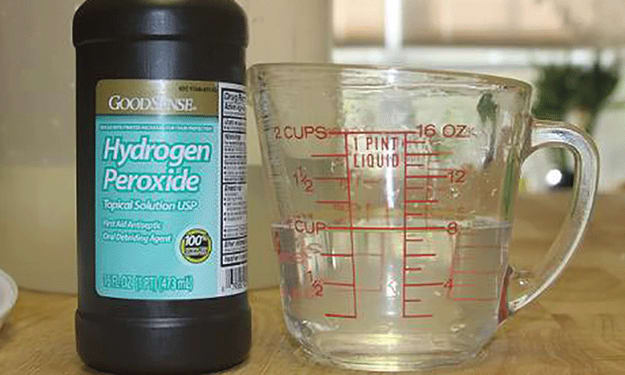How To Keep The Yummies For The Tummy
Food Storage Tips

Food is the cornerstone of prepping. It’s one of the five major categories of survival, and a branch of the Three Rule. For every food item you buy, there is a good chance you’ll throw it away before you even have time to eat it. Food wastage is a growing problem across the world. Every year we throw away 2.6 trillion dollars of food. That is one-third of the market! With every household in the U.S. Contributing $1,866 to the problem, the best way to cut this number is by setting up a proper food rotation system at home. Here are some tips to show you how.
Packaging

The packaging is what protects the food from the elements. It’s these elements that cause good food to go bad. If a box is crushed or torn, the food inside could become contaminated. If it’s a bag or a pouch, look for holes, as this is a sign of bugs nesting inside. Glass bottles and jars should be looked over for cracks. If they are, then there is a good chance that chips could be lurking in your food. Canned goods that are covered in dents or rusty could lead to tetanus, botulism, and BPA poisoning.
Expiration Dates

This is the source of a lot of controversy within the prepping community. The expiration date has nothing to do with when the food goes moldy. It tells consumers when that item tastes its best. The FDA places expiration dates into five categories. The ‘Sell By’ dates are for goods that need to be consumed quickly. Foods that are in this group are often good one to three weeks after the listed date, but you should still do a sniff test to be safe before consumption. Foods with the ‘Use By’ or ‘Best If Used By’ label are telling you that this food will taste awful or dry after this date. ‘Expires On’ or ‘Do Not Use After’ dates are on foods you shouldn’t take a chance with. These go on heavily regulated goods like formula and some over-the-counter medication. There is a link at the bottom to a chart with commonly bought food and when they officially go bad.
The Freezer

The only thing that doesn’t freeze in a freezer is time. Despite popular belief, sticking food in the freezer will not last forever. The freezer just slows the process of decay down. Ground beef and steak last six months, while chicken and pork can last up to a year. Process meats like bologna and hot dogs have the shortest lifespan of only two months. This is because the meat fibers break down while defrosting, causing the meat to become tough. Pre-frozen goods like french fries and TV dinners often have a ‘Best By’ date on the package. Another issue to consider with frozen foods is freezer burn. Freezer burn is when food in the freezer becomes spoiled by frost because the original packaging wasn’t air-tight enough to keep out moisture. You won’t get directly sick from freezer-burnt food, but it will taste bad.
FIFO

Anyone who has a job where you handle food of any kind, whether it be a restaurant or a grocery store, is well aware of the phrase ‘First In, First Out’ or FIFO for short. The point of this is to make sure that the food on the verge of going bad is consumed first. When stocking up your pantry, you’ll want to put the items you just purchased behind the old inventory. You should make sure when setting up your rotation that you have easy access to the back. If you don’t, you’ll be less likely to follow through on proper FIFO. I know this personally because I made the mistake of stocking all my cream soups on top of each other. It goes, chicken, celery, mushroom, and tomato. Recently, my house has been using a lot of cream of chicken, but I haven’t had the time to rotate in the new cans. To put in the new cans, I’ll have to take the whole section down and restock it. So, now the new soup is sitting in a bag on the floor waiting to be rotated in.
It Was On Sale!

Just because it’s on sale or is a great bargain, you shouldn’t buy it if you don’t like it. Only focus on foods you know you’ll eat or already know your family likes. If you buy foods that nobody wants, then nobody will eat them. During and after a disaster is not the best time to learn a new recipe, so stick to dishes you already know how to make. If it’s a new food altogether, you or your family might not like it. The best time to try out new things is way before it hits the fan. I usually set up one day a week to try out new dishes to experiment with. If the recipe is a hit, then add it to your food rotation pantry.
Food Fatigue

Add variety to your food rotation. Most beginners often buy the first case of canned food they see on sale. They’ll put it in the cabinet and cross it off their to-do list. This is often a terrible plan. If it’s a food you hate, then it’ll go bad before you consume it. If it’s during and after the crisis and that’s all you have, then Food Fatigue sets in. Food Fatigue is when your body becomes overwhelmed by eating the same food for multiple days in a row. Symptoms include nausea, lack of energy, and malnutrition as your body rejects the food.
The Little Things

I’ve mentioned this in ‘Prepping 101’ (https://vocal.media/lifehack/prepping-101), but I feel like I should explain this in more detail. Let’s start by making a three-week menu that includes breakfast, lunch, dinner, and two snacks for each person in your household. As a breakfast menu item, I have oatmeal. Now, think about making an imaginary bowl of oatmeal, and list everything you need to make it. Let’s see, you’ll need two oatmeal packets, a bowl, a spoon, a cup of raisins, and half a cup of milk. So, on my grocery list, I’ll include these items. Most people, when making a menu, often forget about the minor ingredients, dishes, and cutlery that go into meal prep. This is because we use them so often that they blend into the fabric of our life. We don’t notice them missing until they are gone. Most meals will be useless if you don’t have these little things to make them. What is Hamburger Helper without ground beef? Or a box of cake mix without eggs? By breaking down your menu like this, you can assure that you have all the pieces necessary to make your family meals throughout the crisis.
Do They Need To Be Rotated Too?

Once you set up your food rotation system, you can set up a similar system for your other supplies that also expire. Medication loses half of its strength one month after its posted ‘Sell By’ date. Cleaning products have a two-year shelf life. Hygiene products have a date on their packaging that looks like a little jar that says how long the product is good for. Bar soap dries out in three years. Check the packaging of everything you buy and list the date next to it in your Prepper Binder to ensure proper rotation. Once a month, I do a thorough rotation of everything in my stock to ensure the bad stuff is pulled immediately.
About the Creator
M.L. Lewis
Welcome to my little slice of pie. This blog will primarily focus on prepping and homesteading skills with a sprinkle of fiction every now and then.






Comments
There are no comments for this story
Be the first to respond and start the conversation.